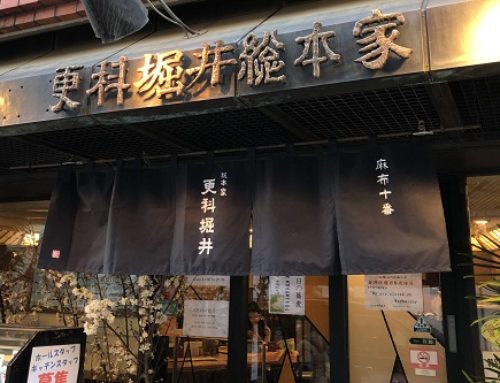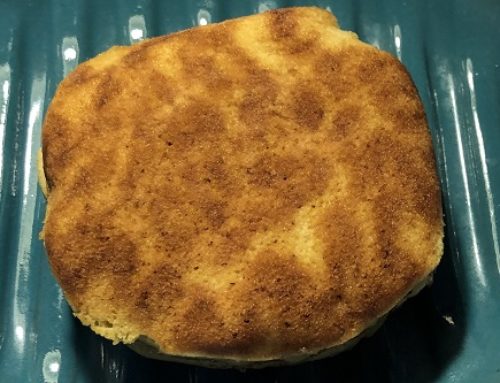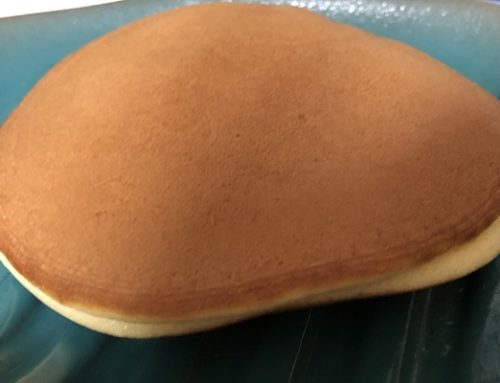Soba noodles restaurant Namiki Yabu-soba bears traditional brand name “Yabu”. Yabu is one of the three big brand names of soba noodles restaurants in Tokyo.
Background of Namiki Yabu-soba
Originally Yabu-soba is not formal name but commonly used name. It seems that some soba noodles restaurants which were very popular and stood by bamboo grove were called Yabu-soba. They say there were several soba noodle restaurants commonly called Yabu-soba in Edo Period (1606 – 1867).
From the last years of Edo Period to Meiji Period, there was the renowned Yabu-soba restaurant (formal restaurant name Tsuta-ya). In 1880, Shichibe-e Hotta acquired the branch restaurant of Tsuta-ya. This acquired restaurant became Kanda Yabu-soba. Unfortunately original Tsuta-ya itself went out of business in 1906.
At the end of Meiji period, Katsuzō Hotta, son of Shichibe-e Hotta, opened soba restaurant at Kyōbashi. Then the restaurant moved to Namiki-chō in 1913. This is current Namiki Yabu-soba.
Fundamental information on Namiki Yabu-soba
Address of Namiki Yabu-soba is 2-11-9 Kaminarimon Taitō-ku, Tokyo. It’s about 1 minute walk from Exit A4 or A5 of subaway Asakusa starion (Toei Asakua line, Ginza line of Tokyo metro), about 5 minutes’ walk from Asakusa station of Tōbu Isezaki line.
The restaurant opens 11:00 am to 19:30 except Thursday. The restaurant closes on Thursday.

Namiki Yabu-soba just before opening
Namiki Yabu-soba is a small restaurant. It has three tables (2 six-seats tables and 1 four-seats table) and tatami-floored seating with 5 four -seats tables. When you use tatami-floored seating, you have to take off your shoes and sit without chair. When the restaurant is crowded, you have to share the table.

Dining room and kitchen of Namiki Yabu-soba

Menu plates on the wall
Although menu plates on the wall are Japanese, an employee brings English menu for you. And one employee can speak English.
They say the restaurant kneads soba flour by hand and makes soba noodles by machine. Since people don’t agree on percentage of soba in soba noodles, I can’t say definite value.
Soba noodles served
As I want to compare tempura with that of Tranomon Ōsakaya Sunaba, I ordered Ten-zaru-soba here. It cost 1,800 yen.

Ten-zaru-soba at Namiki Yabu-soba
On lower left side, there is a small dish with condiment (green onions and wasabi (Japanese horseradish)). You could see a cup with dipping soup on the right side of this small dish. And there is a dish with Tempura on upper side of condiment dish. Dipping soup served with Ten-zaru-soba was warm. Whereas in other soba restaurants, usually cold dipping soup is served with cold soba noodles.
Here tempura was 4 or 5 small pawns, probably Shiba-ebi (Shiba-shrimp). It seems the restaurant used good oil to fry them. Tempura was light and crispy. Small pawns tasted good. Soba noodles were good. I think they were far above average. But portion was very small. You couldn’t satisfy your appetite with soba noodles at Namiki Yabu-soba.
Originally soba-noodles restaurants served soba not as lunch or dinner but as light snack. In this sense, we might say Namiki Yabu-soba follows tradition. Some might think cost performance of the restaurant is not so good.
But small portions and price is all right for you, I think Namiki Yabu-soba has value to drop by if you are around Asakusa.






Leave A Comment